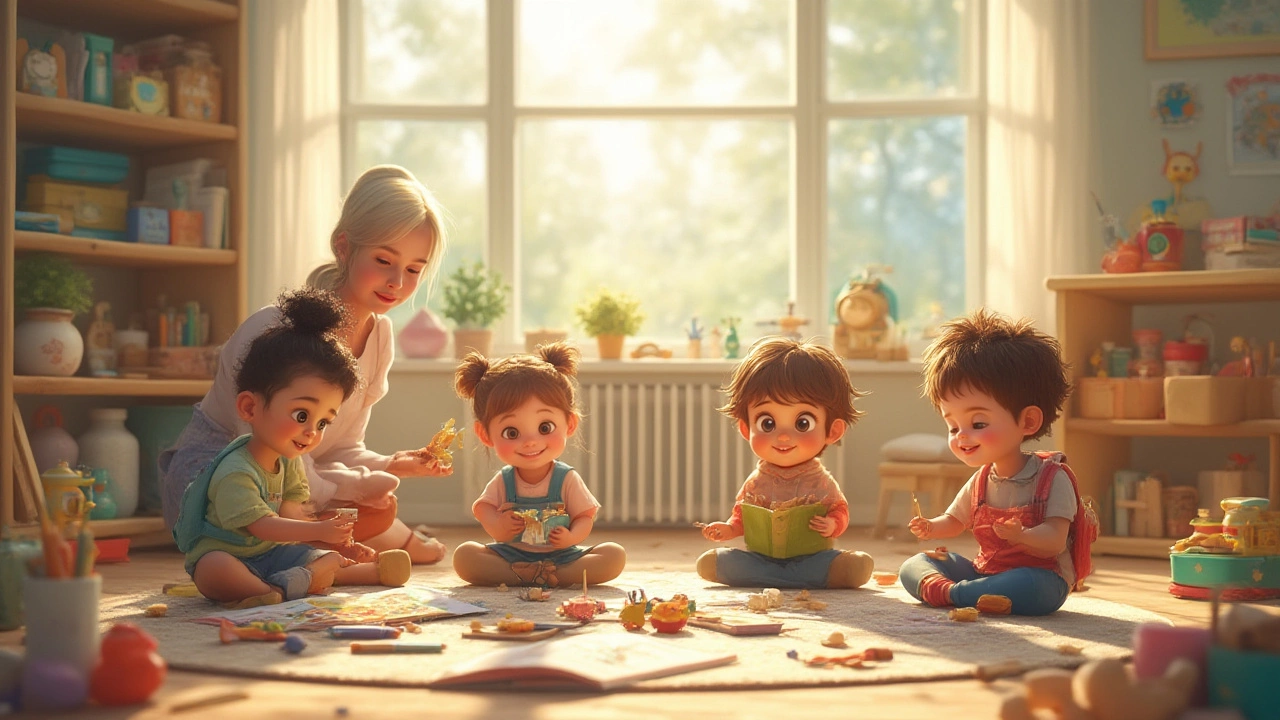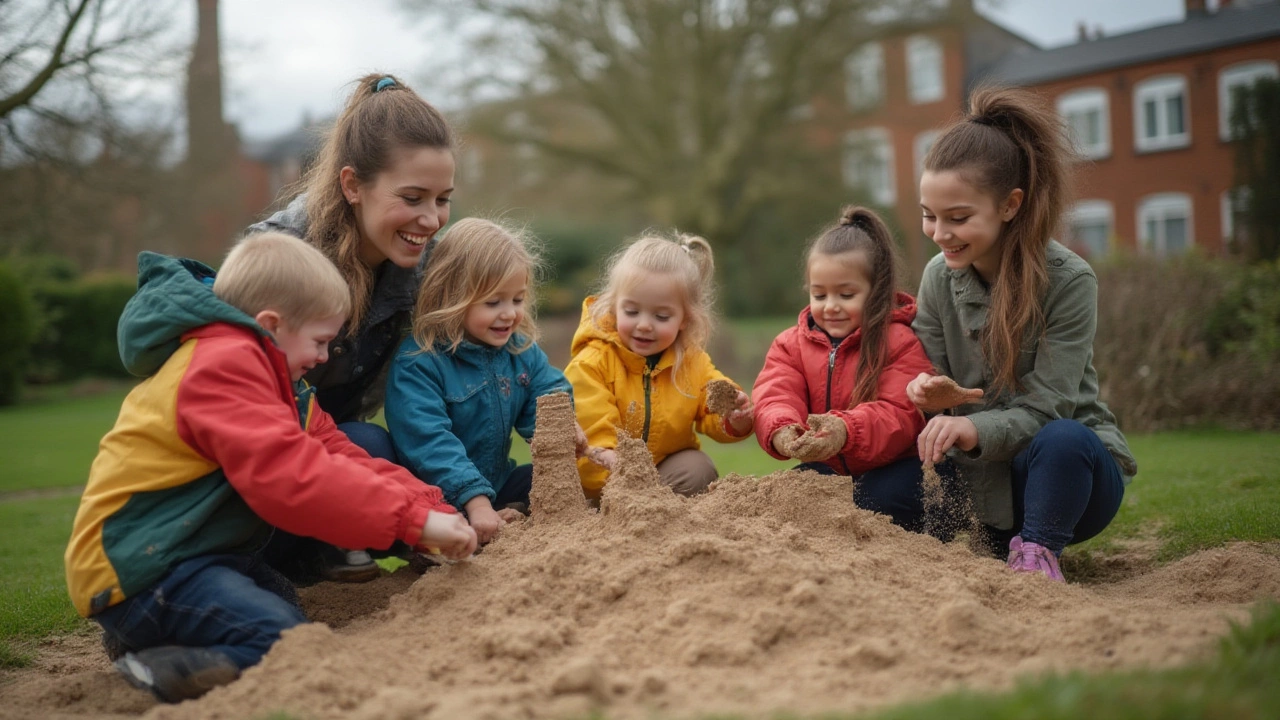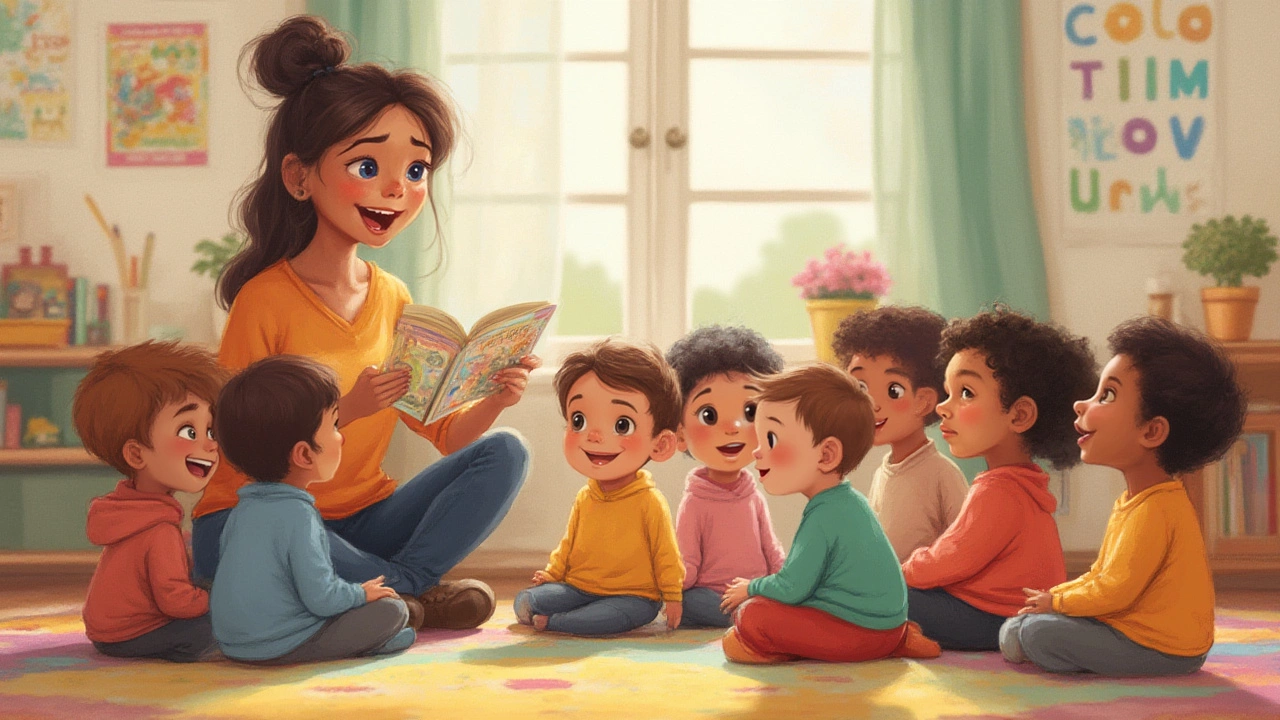-
16
- 0

Early Years Education Explained: Importance, Benefits, and Impact on Child Development
Picture a room filled with laughter, building blocks, tiny hands smudged with paint, and little voices trying out new words for the first time. That’s what early years education looks like in action. But beyond the colorful walls and cheerful chaos, something remarkable is happening. Children aren’t just passing time—they’re setting the groundwork for everything they’ll ever learn, feel, and do.
What is Early Years Education and Why It’s Essential
Early years education isn’t just about cute crafts and naps. It covers the learning experiences children have from birth until about age five. This period is like wet cement—whatever gets poured in stays for a lifetime. According to the Center on the Developing Child at Harvard University, more than 1 million new neural connections form every single second in the first few years of life. That means every story, song, and stack of blocks is literally shaping a child’s brain structure.
The meaning of early years education is much deeper than most people think. It’s not limited to formal preschools or childcare centers. It’s any deliberate approach that nurtures a child’s language, social skills, curiosity, and emotions. It could be a parent talking to their baby during a diaper change, a nursery rhyme group at the library, or a specialized early years program run by trained educators. All these moments matter. The early childhood years set appetite for learning, build social confidence, and lay the first bricks of emotional intelligence. In fact, the UNESCO Global Monitoring Report in 2022 stated that high-quality early years education can boost school readiness and reduce achievement gaps by up to 50% among low-income children.
But why does this matter so much? The foundation kids gain during early years education shapes not just their school performance, but their entire future. Young children who experience high-quality early education are less likely to struggle in primary school, more likely to graduate, and often show better emotional resilience. One huge study in the UK (EPPE Project, 2004) followed 3,000 children and found that those who attended well-run early childhood programs performed better in reading and maths at age 11. Those benefits lasted for years.
Parents sometimes ask, “Isn’t play enough?” Here’s the thing: purposeful play is the engine of early learning. When educators design playful activities—sorting shapes, singing songs, building towers—they’re teaching kids basic math, language, and social skills without any of the pressure of ‘formal lessons.’ In fact, play-based learning is so effective that the World Bank recommends it as the gold standard for early years education worldwide.
Not every child gets the same shot, though. Access is uneven. UNICEF’s 2024 report revealed that 70% of children in low-income countries still lack access to quality early years programs. That means millions of brains missing out on crucial support at the time they’re most flexible and ready to learn. In many places, affordability and lack of trained educators limit the benefits of early years education to only certain families.
If you’re wondering if a child is “ready” for early years education, think less about age and more about opportunity. Any environment that promotes safety, play, language, and curiosity can be the right start. The more a child hears language, explores textures, solves little puzzles, and interacts with caring adults, the better. In practical terms, just reading aloud every day, playing peekaboo, or stacking cups builds foundational skills that traditional schooling will later rely on.
Still, the meaning of early years education continues to evolve. New research keeps showing us that it’s not just about ABCs. It’s about nurturing kindness, patience, turn-taking, and problem-solving. The best preschools—and even informal caregivers—have learned that helping kids develop ‘soft skills’ like empathy and self-control is as vital as teaching them numbers and letters.
Here’s a quick look at some key milestones children hit during the early years:
| Age | Milestones |
|---|---|
| 6-12 months | Babbles, crawls, shows separation anxiety |
| 1-2 years | Starts talking, walks, simple pretend play |
| 2-3 years | Builds simple sentences, runs, shares toys |
| 3-4 years | Asks lots of “why” questions, draws shapes, plays cooperatively |
| 4-5 years | Tells stories, counts to ten, understands turn-taking |
Each step builds on the last. When a teacher or parent responds warmly to a child’s questions or helps them navigate a tricky emotion, they’re wiring the brain for future learning and healthy relationships.

How Early Years Education Shapes Brains and Futures
This topic isn’t just for teachers and policy nerds. It touches every parent, carer, and neighbor. Think of early years education as the ‘starter culture’ for everything that comes later. There’s plenty of evidence showing that what happens in a child’s first five years sets the stage for adult health, behavior, and ability to learn new things. And while a baby’s brain is only about a quarter of its adult size at birth, by age five it’s already 90% there. That’s wild, right?
The science is clear. Early experiences don’t just influence how smart or talkative a child might be; they tune stress responses, shape memory and focus, and even influence the likelihood of future illnesses like heart disease and diabetes. Kids who feel safe and supported develop brains that handle stress better. Without nurturing, chronic stress actually shrinks parts of the brain that control memory and emotional regulation. That’s why quality early care is a real investment, not a nice-to-have.
The Perry Preschool Study out of Michigan followed kids from low-income backgrounds who attended a quality preschool in the 1960s. Decades later, those kids did better in school, earned more money, held steady jobs, and even had longer marriages than peers who missed out on early education. Similar studies in the UK, like the Sure Start program, saw reduced special education needs and improved reading by age 5 among children who started in government-funded early years settings.
A quality early years program looks like this: adults listen, respond, and carry on conversations. Play is everywhere, whether with puzzles, sand, or group activities. There’s a strong relationship between children and their primary carers, who tune into each child’s needs. No rigid structure, no ‘sit still and behave’ expectations—you’ll see freedom mixed with a gentle routine.
- Intentional Talk: Adults who explain, ask questions, and encourage back-and-forth chatter foster language and thinking skills fast.
- Playful Exploration: Kids learn best when experimenting with real things—counting apples, pouring water, feeling mud.
- Problem Solving: Group play helps kids practice sharing, turn-taking, and working through conflict before school starts.
- Emotional Support: Naming feelings (“You look sad—did you want the red crayon?”) teaches empathy and self-understanding.
The best teachers are like careful gardeners. They don’t just wait for flowers to bloom—they dig, water, and protect. But you don’t need a formal classroom or expensive toys. Everyday items like measuring cups, pots, and even cardboard boxes can become the best learning tools when an adult joins in the play.
Let’s get specific about what early years education delivers:
- Boosted Language: Preschoolers exposed to rich conversation may know more than twice the words by age four than those who aren’t.
- Stronger Maths Sense: Simple counting and shape games lay a base for later algebra and problem-solving.
- Bigger Social Skills: Kids who mix with others from a young age usually manage group work and cooperation better in primary school and beyond.
- Improved Focus and Self-Control: Activities that involve waiting for turns, following simple instructions, and finishing small tasks help develop the ‘executive function’—the brain’s control center for attention and planning.
- Healthier Habits: Early years settings often encourage washing hands, eating healthy snacks, and moving bodies, making those habits stick for life.
Did you know? According to the National Institute for Early Education Research in the US, kids from high-quality preschools are 31% less likely to need special education services later. That’s actual money saved for families—and for society—down the line.

Tips and Insights for Parents and Caregivers
Navigating the early years can feel overwhelming—a mix of joy and exhaustion—but even small actions make a big difference. Some parents worry if they’re ‘doing enough,’ but the research is reassuring. What matters most is loving interaction and everyday play. Here are a few hands-on tips for helping your child thrive, whether or not you have access to formal programs:
- early years education starts at home: Everyday routines like mealtime, bath time, and walks to the park are perfect for conversation and teaching. Comment on what you see, ask simple questions, sing songs—even silly ones!
- Read Everything: Story time isn’t just for bedtime. Reading road signs, food packets, and even shopping lists exposes your child to new vocabulary and ideas.
- Let Them Help: Give toddlers small ‘jobs’ like stirring, stacking, or sorting. It builds a sense of capability and introduces math and organizing skills.
- Cherish Boredom: Too many toys can stifle creativity. Offer open-ended items—scarves, boxes, spoons—so your child invents her own games.
- Name Emotions: When your child is upset or excited, describe what you see and help them put words to their feelings. “Are you feeling frustrated? Let’s take a breath together.”
- Mix with Others: Even one or two regular playmates are enough. Practicing turn-taking and sharing builds lasting social tools.
- Seek Quality, Not Just Quantity: If you’re looking at early years settings, focus on how teachers interact. Happy chatter, laughter, and patient listening are better signs of learning than fancy materials.
Sometimes, too, the best learning moments are surprising. Watching ants, splashing in puddles, or helping chop a banana transforms regular life into a science experiment or a math lesson. Children remember experiences, not worksheets. Their first years aren’t just a warm-up—they’re the main event.
Early years education, at its heart, means giving a child a safe, loving space where curiosity is encouraged, questions are welcome, and every emotion is valid. Brain wiring happens faster than you can blink. The world’s best research backs the power of these early years. And while access and opportunity can still be unfair, every caregiver can help bridge that gap—one song, one story, one messy art project at a time.
Write a comment
Tags Weight
- education
- study tips
- adult education
- exam preparation
- online courses
- adult learning
- lifelong learning
- distance learning
- GCSE revision
- online education
- private tutoring
- special needs education
- scholarships
- remote learning
- scholarship tips
- financial aid
- international students
- effective learning
- e-learning
- education funding

Written by Elara Winslow
View all posts by: Elara Winslow